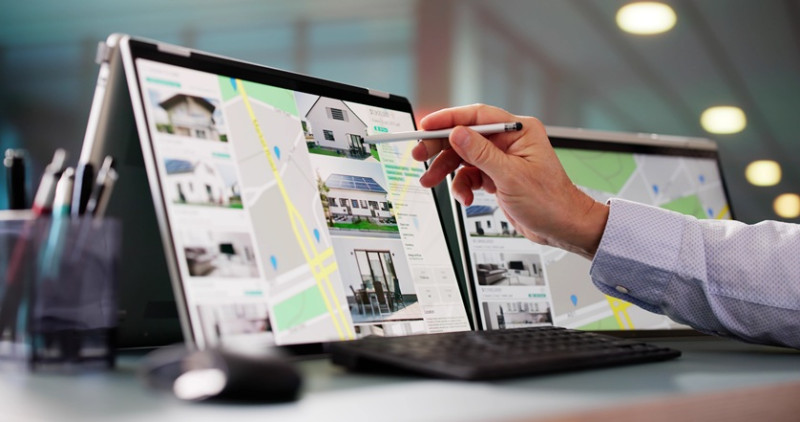
Whether you're a first-time landlord, a DIY homeowner maintaining a rental, or a seasoned investor working alongside designers and tradesmen, it's essential to understand where your money is really going when it comes to property management. It’s not just about collecting rent — effective property management takes strategic planning, ongoing reinvestment, and a keen eye for both routine and unexpected costs. Let’s break down the real expenses behind keeping any property functional, attractive, compliant, and profitable in today’s competitive UK market.
1. Maintenance and Repairs: The Backbone of Property Health
Regular maintenance is one of the most significant ongoing costs in property management. This includes everything from seasonal boiler servicing to roof inspections, gutter clearing, and re-pointing brickwork. Neglecting these tasks can lead to more costly repairs down the line.
DIY enthusiasts and professional tradesmen alike will recognise how efficiently reducing maintenance costs starts with visibility — knowing what needs attention and when. Regular inspections and having a solid preventive maintenance schedule can help minimise surprise expenses. It’s better to replace worn sealant around bath edges now than deal with a mould-infested wall later.
For older homes, especially those with period fixtures or outdated systems, maintaining charm often comes at a price. Timber features, sash windows, and antique tiling may require specialist attention. Engaging skilled professionals might incur higher fees, but it preserves property value in the long run.
There’s also emergency maintenance, such as burst pipes, boiler failures, and electrical short circuits — all of which often occur at the worst times. This is where budgeting for a maintenance reserve becomes crucial. Many experts recommend setting aside at least 1% of the property’s value annually for maintenance.
2. Staffing and Management Fees: Expertise Comes at a Cost
If you're managing a portfolio or short on time, hiring a professional property manager is often worth the investment. Management fees typically range from 8% to 15% of the monthly rent, depending on the services provided. These often include rent collection, tenant screenings, maintenance coordination, and compliance monitoring.
Even self-managed landlords will often need to employ virtual assistants, accountants, or legal advisors, especially when scaling up or dealing with complex tenancy issues. From arranging Energy Performance Certificates (EPCs) to preparing for gas safety inspections, there’s a good chance someone needs to be paid to do it right.
Architects and designers who dabble in property investment should factor in consultation costs for space planning, layout changes, and styling to maximise ROI. This also applies to upgrades and development—a well-designed flat refurb can command significantly more rent.
Technology-based property management platforms are also gaining popularity, offering automation tools and secure record keeping. While they can cut down long-term operational costs, they still require subscription fees and an onboarding investment.
3. Legal Compliance and Certifications: Staying on the Right Side of the Law
In the UK, landlords must ensure their properties adhere to various safety and tenancy regulations. Falling foul of the law can result in heavy penalties, voided insurance, or even criminal liability. Therefore, budgeting for compliance is not optional — it’s essential.
Legal requirements include annual gas safety checks, electrical inspections every five years (EICR), smoke and carbon monoxide detector installations, and right-to-rent checks. Each of these comes with certification costs, often stacking into hundreds of pounds annually.
Landlords operating in selective licensing zones must also pay council fees – sometimes reaching £1,000 or more depending on the borough. This is particularly relevant in parts of London, Manchester, and Liverpool where rental regulation is tight.
Then there are eviction, dispute resolution, or tribunal-related legal fees that can quickly snowball if not managed correctly. Smart investors and landlords often insure themselves with legal protection policies or employ solicitors on retainer to avoid large lump sum costs when issues arise.
4. Utilities and Council Tax: The Less Obvious Burden
In rental agreements where landlords cover the cost of utilities, these can form a significant monthly outgoing. Whether you're managing HMOs (houses in multiple occupation) or short-term serviced flats, council tax, water rates, and electricity bills eat into your net income fast.
Especially for landlords or Airbnb hosts offering fully furnished lets, including bills may act as a competitive edge to attract tenants quickly. But energy prices in the UK have risen considerably in recent years, and poorly insulated properties can incur bills that exceed expectations.
That’s why proper investment in energy efficiency improvements, such as insulation, draught-proofing, and switching to energy-efficient lighting can yield long-term savings. Simple steps like using thermostatic radiator valves or smart heating controls can make a surprising difference.
Be sure to also calculate communal area costs if managing a block or building. Lifts, emergency lighting, shared boilers and security systems, fire alarm monitoring – these all add up to hundreds or thousands a year.
5. Insurance: Protecting Your Property and Investment
Insurance is often overlooked until it's too late. In the UK, landlords must at least hold buildings insurance, but many also opt for landlord-specific policies that cover third-party liability, loss of rent, and accidental damage caused by tenants.
Insurance premiums are influenced by the property’s location, size, construction type, and level of occupancy. For example, student accommodation may carry higher premiums compared to a couple renting a one-bed flat.
Some policies may require regular property inspections or eligibility conditions, such as working smoke alarms and secure windows. Failing to comply could invalidate cover, leaving you drastically out-of-pocket after an incident.
If managing multiple properties, consider portfolio insurance to reduce premium costs and simplify management. It makes record keeping easier and may qualify you for volume-based discounts or reduced excess fees.
6. Marketing and Tenant Turnover Costs
Every time a tenancy ends, there’s a cost to filling the vacancy — even if it's unoccupied for just one week. This includes online advertising, professional cleaning, inventory checks, tenancy agreement preparation, and possibly minor touch-ups or paint refreshes.
Platforms like Rightmove and Zoopla often charge agents or landlords to list properties, while professional photography and virtual tours help attract high-quality tenants but come with their own price tag.
Empty properties not only lose rental income — they still accrue costs like mortgage payments and utility standing charges. That’s why minimising void periods is crucial. Many landlords offer incentives or allow pets or flexible contract terms to stand out in the marketplace without drastically reducing monthly rent.
Retaining good tenants is the goal, and investing into the property to improve tenant experience — such as refreshing interior design, upgrading appliances, or improving garden access — is money well spent. It can improve loyalty and reduce churn, saving thousands over the years.
7. Capital Improvements and Renovations
While not strictly “expenses,” capital improvements such as updating kitchens, laying new flooring, or converting lofts and garages into living space require significant upfront spending. These projects, though costly, can add long-term value and rental appeal to a property.
Professional designers and architects often play a key role in creating high-end appeal on tight budgets. Even simple redecoration by skilled tradesmen — think tile refresh, neutral colour schemes, efficient storage — can transform a tired flat into a top-market contender.
Structuring capital investments smartly over time can also offer tax advantages when selling the property or applying for mortgages. It’s important to balance cosmetic upgrades with structural needs — a new kitchen won’t matter much if persistent damp or drafty windows remain untreated.
For landlords targeting student accommodation or professionals, modern kitchens, strong broadband, built-in desks, and quality furnishings can command much higher rents and shorter void periods, paying for themselves over time.
Summary: Balancing Cost with Value
Property management in the UK involves far more than cutting keys and collecting rent. Every penny you spend — on repairs, staffing, compliance, void management, or upgrades — should ideally deliver a return in peace of mind, property longevity, or tenant satisfaction.
Below is a sample table breaking down typical expenses to visualise where your investment flows each year:
| Expense Category | Estimated Annual Cost (Per Property) |
|---|---|
| General Maintenance & Repairs | £1,000 - £2,500 |
| Management Fees | £1,200 - £2,400 (10% of rent) |
| Legal & Compliance | £300 - £800 |
| Insurance | £180 - £500 |
| Utilities (if included) | £1,000 - £2,000 |
| Marketing & Tenant Turnover | £250 - £800 (per cycle) |
| Capital Improvements | Varies - £3,000+ |
By understanding and planning for these essential costs — and balancing them against property income and long-term value — landlords, renovators, and design-savvy investors across the UK can make smarter, more resilient property decisions. After all, every pound you spend should work just as hard as the ones your tenants pay you each month.







